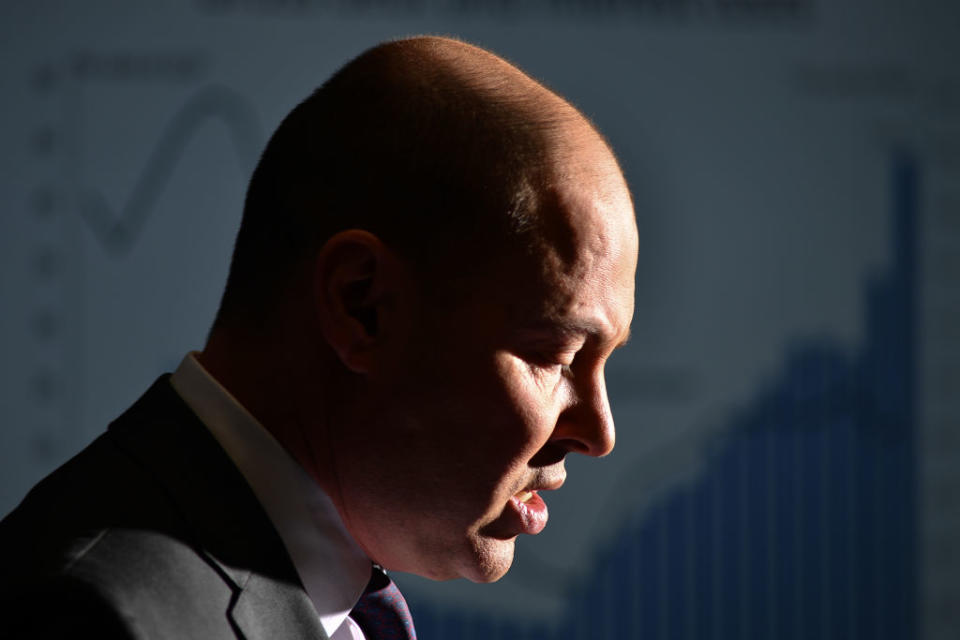2020: The year the Federal Budget blows up

In recent years, budgets have been pretty dull.
They are generally devoid of big-bang policy announcements and instead have a raft of small to medium policy changes most of which have been leaked to the media in the lead in to the Treasurer’s budget speech.
Instead, recent budgets have largely been Federal government accounting exercises where changes in the economic forecasts have had a bigger influence on the fiscal position than changes in government spending and revenue.
In each recent budget, there has usually been a bit of excitement about the bottom line – the return to a budget surplus, but not much else. This has, somewhat bizarrely, been judged as evidence of good economic management and has often been reported that way.
More from The Kouk: Jobs data: The good news and the bad news
More from The Kouk: House prices down, but no crash: What's going on with Aussie property?
More from The Kouk: 'Trifecta of falling GDP': Fixing Australia’s deep recession
Let’s have a look at last year’s budget
A lot has happened since Treasurer Josh Frydenberg handed down the last budget in April 2019.
There has been an election, an oppressively hot summer with destructive bushfires, a global pandemic, a deep recession and extreme interest rate cuts, to name a few key issues.
In last year’s budget, which notably was delivered a few days before the 2019 election was called, Treasurer Frydenberg proudly boasted in a headline-grabbing flourish: “I announce that the Budget is back in the black and Australia is back on track”.
It sounded good. A surplus ‘had’ been delivered and this theme was to be a key focus of the Coalition in the subsequent election campaign.
In a classic lesson of the dangers of claiming a forecast is an outcome, the budget remained in the red, a deficit in other words, and the Coalition parties which prided themselves on budget management are still yet to deliver a surplus, despite being in power for seven years.
There was more. On budget night last year, Mr Frydenberg, was “pleased to announce a budget surplus of $7.1 billion and a total of $45 billion of surpluses over the next four years.”
While the details of the budget will be revealed on budget night on 6 October, that $7.1 billion surplus has turned out to be a deficit of about $85 billion.
The $45 billion of surpluses over the next four years look like being deficits of half a trillion dollars; $500 billion in other words.
Showing off the Coalition’s budget credentials, Mr Frydenberg also said that “John Howard and Peter Costello paid off Labor’s debt and tonight the Morrison Government sets a path to do it again.”
The government side of the House of Representative chamber cheered at this statement.
Unfortunately for them, the latest data show that rather than paying off debt, gross government debt is currently a record $787 billion and is poised to exceed $1 trillion by 2022-23. It was just $273 billion when the Coalition won the 2013 election.
Net government debt was $488 billion at end June 2020 and is rising sharply in line with the massive budget deficits.
What else could we do?
Of course, with a deep recession and mass unemployment, the government had to change policy tack. The ‘back in the black’ rhetoric should now read ‘still in the red’.
A lot like the previous Labor government did when the global financial crisis swooned over Australia like a Death Eater a little over a decade ago, use of the budget and fiscal policy is vital in managing the economy, supporting jobs and businesses in otherwise troubling times.
Mr Morrison has learnt that.
Indeed, the Morrison government had no choice but to accept the budget was cascading into a deep deficit, even without any policy measures to support jobs. The measures the government delivered added significantly to the budget deficit and government debt, and that was a welcome thing.
Economic outcomes, not the budget deficit
Most sensible economists judge the potency and worth of a budget by outcomes in the real economy.
In macroeconomic terms, what did the policy changes mean for employment, the unemployment rate, real wages, business investment and the like.
And while there has been around $250 billion of government policy stimulus, there are still over 18 per cent of the workforce unemployed or underemployed. Wages growth has crashed to a record low and is forecast to fall further. Private sector business investment is at a record low share of GDP.
It seems that whatever the budget measures have been, they have not been enough to support the economy.
The budget on 6 October should have as its focus the policies needed to get back to full employment, to get businesses to invest again, to get the economy firing so that wages growth can pick up.
Unlike recent efforts, this budget has the potential to get the economy back on track if only the policies are set to get it there.
Make your money work with Yahoo Finance’s daily newsletter. Sign up here and stay on top of the latest money, economy, property and work news.
Follow Yahoo Finance Australia on Facebook, Twitter, Instagram and LinkedIn.

 Yahoo Finance
Yahoo Finance 